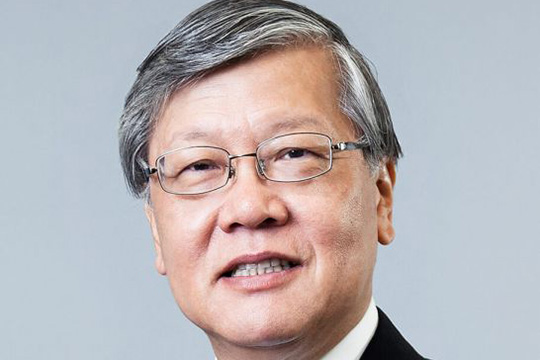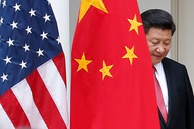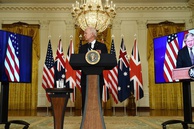This month, Malaysia celebrates its 62nd anniversary of Independence, led by 94-year old but digitally savvy Prime Minister Mahathir Mohamad. Singapore also celebrated its 54th National Day this month, with Prime Minister Lee Hsien Loong speaking in Malay, Mandarin and English about how to prepare Singapore for climate change. At the 74th anniversary of Independence, Indonesian President Joko “Jokowi” Widodo announced an ambitious plan to move the capital from Jakarta to Borneo.
Traveling around ASEAN this month made me realize that while the rest of the world is more preoccupied with the turbulent present, Southeast Asia is already thinking and preparing for the future.
The reason for this is pretty straight forward. At 600 million people with more than US$2.5 trillion in gross domestic product (GDP), ASEAN economies remain one of the youngest and fastest growing region in the world. ASEAN’s success since the 1960s has been built on trade, peace and stability, and dedication to economic growth rather than politics. Its future success hinges on its political neutrality, despite attempts by the Great Powers asking the region to choose sides.
In Hanoi for a Young Scholars Initiative meeting of young academics, I was struck by how Vietnam was already planning for a digital economy by 2030 and 2045.
Having touched 7.1 percent GDP growth in 2018, and with just under 100 million population, Vietnam has been a major beneficiary of China shedding its low-cost industries and the diversification of the Asian global supply chain.
In 2010, Vietnam achieved the World Bank’s middle-income status and at the current trajectory, could be larger than Singapore’s economy by 2029, according to a DBS study.
In order to maintain its growth momentum and to provide jobs for its growing youth, Vietnam envisaged four possible digital futures, as buyer or seller of digital products and services.
In the first Heritage scenario, using traditional engines of growth with low digital transformation, the additional growth could be minimal.
In the second scenario of Digital Exporter, using overseas companies hiring Vietnamese workers for exports, the projection shows some improvement, but only marginal benefits.
The third scenario of Digital Consumer leverages off Vietnam’s own large consumer market, but the amount of current jobs at risk would be one-third higher than the two earlier scenarios.
The fourth scenario of a Digitally Transformed Economy, across all industries and government services, predicted an increase of 1.1 percent additional annual GDP growth, but 38.1 percent of current jobs would be at risk of transformation or disruption.
In essence, Vietnam realizes that its own industries can be cannibalized by relying only on the foreign sector and should therefore have a total domestic transformation that engages digitally with the rest of the world. That scenario lays out a road map that would give priority to infrastructure, network security, increasing digital skills and capabilities, modernizing government, an industry 4.0 and national innovation plan, and significant tax and regulatory reform.
Arriving in Jakarta last week for a conference on digital finance, I was struck how traffic from the airport has significantly improved, while everyone was also very focused on how digital transformation, social justice and climate change would be critical to Indonesia’s future.
The move out of Jakarta, one of the most congested urban conglomerations in the world, would cost $33 billion over 10 years to build the new capital in Kalimantan. But another $40 billion would be spent on transforming Jakarta, as two-fifths of the city is below sea level and parts are sinking due to rising seas and soil settlement.
Indonesia is moving fast into the digital space, because its internet user growth rate is three times faster than the global average, and its internet user community is only 56 percent or 150 million out of its total population of 268 million. President Jokowi understands fully that “data is the new type of wealth for our nation, it is now more valuable than oil”.
But since Indonesia is one of the biggest markets for Google, Facebook, Youtube and WhatsApp, the key to future growth will be the access to data. Will Indonesian companies, government and start-ups have access to data so that they can compete equally with multinationals that are willing to pay for such data? If we as individuals cede our private data to these platform companies, which then sell them as “private income”, when will data become a public good for growth?
One reason why I am optimistic about ASEAN as digital economies is that they are actually more innovative than the present indicators suggest. If you look at the Global Innovation Index 2019, you would find that Switzerland is number 1, the United States (3) and Singapore (8), while Hong Kong, China and Japan are 13, 14 and 15th respectively. On the other hand, Malaysia ( 35 ), Vietnam ( 42 ), Thailand ( 43 ) and Philippines ( 54 ) are behind Latvia ( 34 ) and nearer India ( 52 ).
These scores are essentially weighted in ways like the famous IQ tests, which were essentially Euro-centric in bias. In the digital space, innovation and ability to capture markets are very much in the SPEED x SCALE x SCOPE framework. China was able to compete rapidly with the US, because of the scale of its internal market (800 million internet users), high speed broadband infrastructure available, and scope of hybrid services across multiple sectors (Alibaba and WeChat).
Clearly, within ASEAN, Indonesia, Vietnam and Philippines have scale, with populations over 100 million each. ASEAN’s real strength is the youth of the population, already digitally savvy and moving into middle and higher income ranges. Hong Kong and Singapore score highly, but that is due to the higher weighting given to institutions, infrastructure and market sophistication, as you would expect from world-class cities. But Singapore came only 34th in terms of creative output, and Hong Kong came 33rd in terms of knowledge and technology outputs.
It is precisely because the ASEAN countries have youth, diversity of culture and access to world-class knowledge, as well as strategic geographical location, that they will become the cutting edge digital future. And since they are, as prof. Anis H. Bajrektarevic rightfully claims, ‘champions of multilateralism’ so much needed in a ‘theatre of brewing expectations’, that of ‘still worryingly bilateral’ Asia.
No economy today can afford to be complacent. Least of all in terms of flawed indices. To think that Hong Kong, considered by the Heritage Foundation to be number one in economic freedom, can descend into protests because of an intergenerational dispute over the rule of law and inequality, means that we need a root-and-branch review of how to compete in a complex digital world.
***
Dr. Andrew Sheng is distinguished fellow of the Asia Global Institute at the University of Hong Kong and a member of the UNEP Advisory Council on Sustainable Finance.
An earlier version of this text appeared in Jakarta Post under the title: A digital August in ASEAN.
read more in our Telegram-channel https://t.me/The_International_Affairs

 17:30 16.09.2019 •
17:30 16.09.2019 •



























